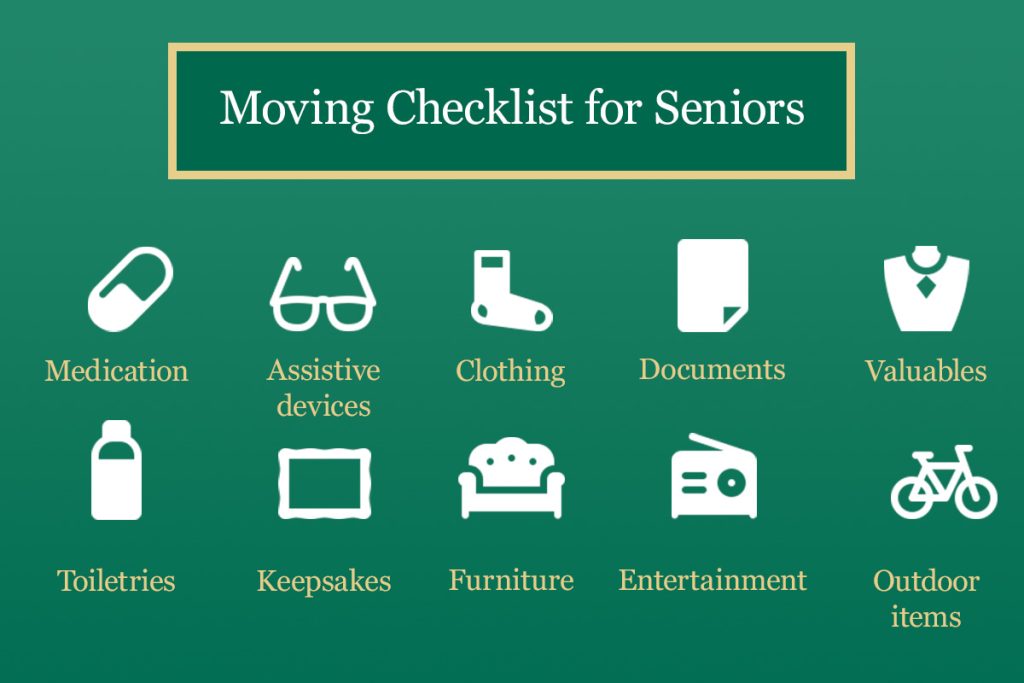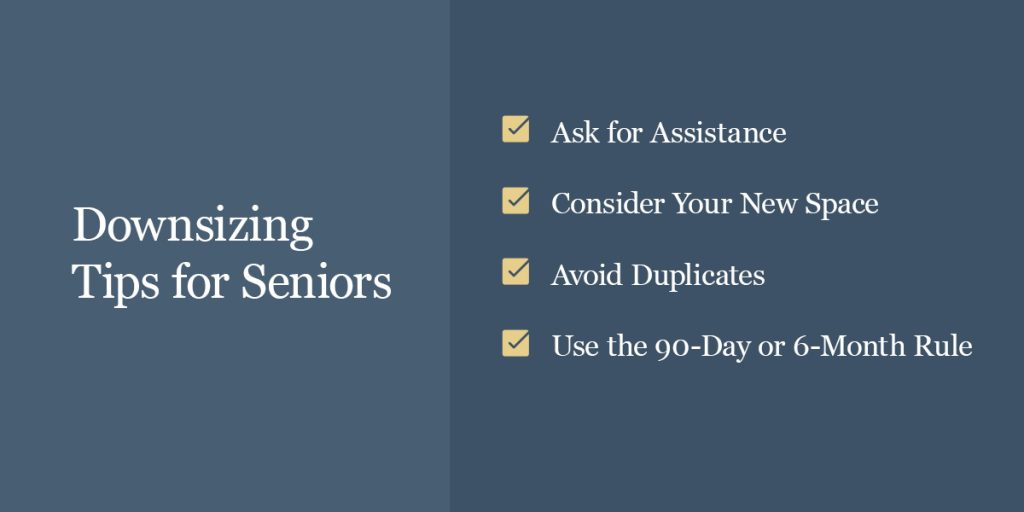Contents:
You’ve made the big decision to move into a retirement home. Though it’s very exciting to embark on this new part of your life, it can also be a bit overwhelming. Moving to any new place requires a lot of planning, packing and keeping track of important tasks. Not to mention, you may be experiencing bittersweet emotions that come along with such a big change.
Leading up to your move, you’ll also need to decide what belongings you want to bring with you to your new home. Downsizing can make your transition much more seamless. We’ve compiled a downsizing checklist for seniors that will help you stay organized and focus on making new memories.

Whether you’re hiring a reputable moving company or having your friends and family help you pack, start with the essentials. Give yourself a head start with a checklist for moving to a retirement home:
This moving checklist for seniors can help facilitate an easier move and transition to retirement living.

Downsizing your belongings can be difficult, especially if you’ve lived in your previous home for decades. However, donating unwanted items can help you arrive at your retirement home with a fresh, positive mindset. It also helps you eliminate unnecessary clutter to make organizing and cleaning your new space easier. Follow these tips for downsizing for seniors:
Ask your family, friends or neighbors to assist you in decluttering your home in the months or weeks leading up to your move. This will make the process go by much faster. Additionally, if you’re decluttering by yourself, you’re much more likely to hold onto items you probably don’t need or use.
Your loved ones will be able to help you determine what items are really essential or sentimental and what items you can do without. To streamline the process, separate your decluttering into four boxes: keep, trash, donate and sell.
If you’re moving to a retirement home that’s smaller than your previous residence, you’ll need to consider where everything will go. Your retirement home will provide you with an independent living floor plan so you can create a comfortable and functional living area.
Having someone measure your furniture to ensure it can fit in the new space can save a lot of time and effort. You’ll also need to take your kitchen, closet and linen storage into account. Multifunctional furniture can provide extra storage and keep pathways clear for those who use mobility devices.
Try to avoid bringing any duplicates that you really don’t need. For example, you may have several sets of dishes in your kitchen that you’ve collected over the years. If you’re living alone or with a spouse, it won’t be necessary to bring 15 plates. The same concept applies to your wardrobe and linens. An extra set of towels and blankets, for example, is perfectly acceptable. However, look for opportunities to get rid of excessive items, such as having three slow cookers that perform the same function.
We tend to hold onto more items than necessary for many reasons, including sentimental value or fear that we might need them “one day.” This mindset often slows down the packing process and may result in piles of boxes collecting dust in your new retirement home.
As a rule of thumb, use the 90-day or six-month decluttering rule. If you haven’t used or worn the item in the last 90 days and don’t think you will in the next 90 days, it’s best to sell or donate it. For those who have a much harder time getting rid of belongings, try the six-month rule. If you haven’t used or worn the item in the last six months, you can probably part with it.
If you or your loved one is moving into a continuing care retirement community, keep these tips in mind:
No matter the reason for your move to a retirement living community, the moving process doesn’t have to be stressful. At Elm Terrace, we know how important it is to feel at home in retirement living. We provide high-quality, continuing care while supporting your independence.
Our Life Plan community, located near the lively downtown area of Lansdale, Pennsylvania, has all the amenities and attractions you need to get the most out of your retirement. We can’t wait for you to experience our social events, entertaining activities and convenient services right outside your door. Contact us online today or call us at 215-361-5600.
